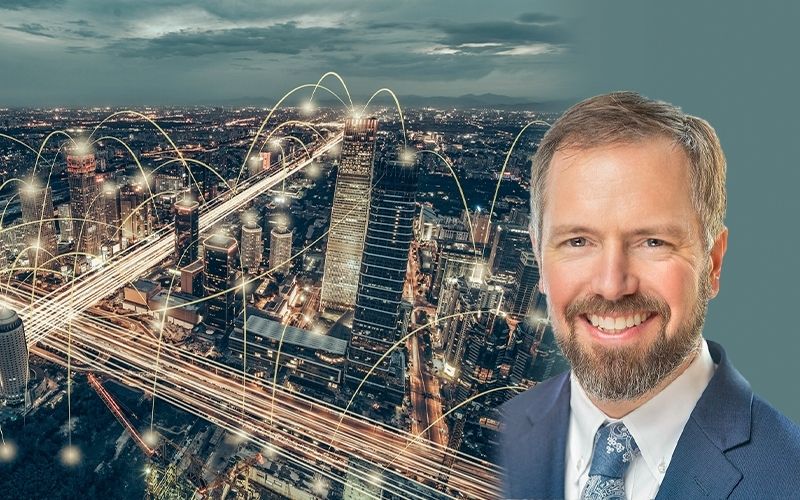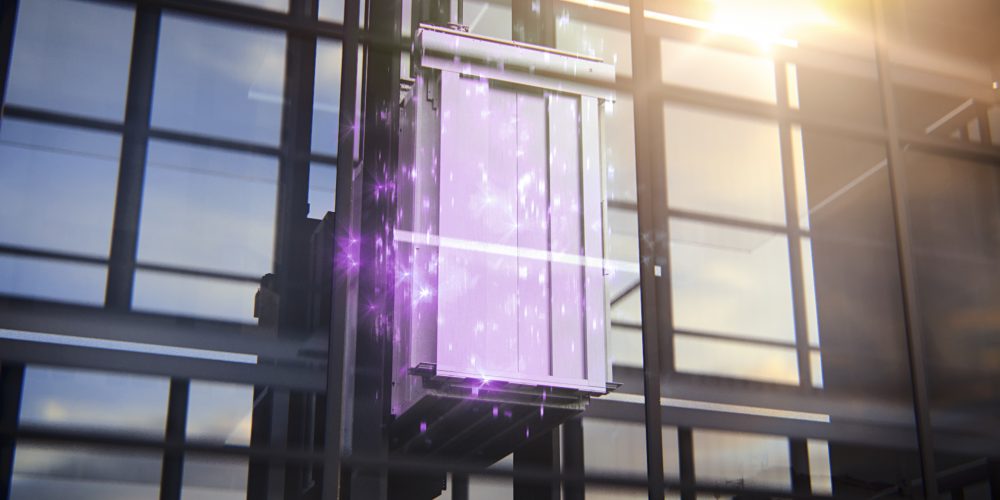Digitalization is revolutionizing elevator services: Jon Clarine shares how and why
How is the elevator industry changing and what can we expect in the near future? Jon Clarine, Head of Digital Services, TK Elevator North America knows and is excited. We talk to him about how digitization transforms services and opens new doors in the elevator industry.

Jon Clarine, Head of Digital Services at TK Elevator North America loves the possibilities that arise with digitalization. Jon’s interest in pushing the envelope using new technologies goes way back. He holds an amateur radio license. He competed to win a 3D printer just to experiment with how it worked. He was an early YouTuber, who used analytics to gain feedback on his videos to earn more viewers. In 2003, he was part of the first “remote service technicians” in the power generation space where he remotely tuned and adjusted power turbines all over the world, which sparked the beginning of what is now commonly referred to as the “Industrial Internet of Things (IIoT)”. Today, Jon continues to be fascinated with gathering intel & creating new value – even more so now that digitalization has exponentially ramped up the possibilities data provides to create tailored, value-added services. We interviewed Jon to dive deeper into his passion for digital technology services in the elevator industry.

You were always passionate about technology. What parallels do you see between your first experiences and your work today?
“As a YouTuber, I learned how powerful it can be to monitor the usage of your products and services. YouTube provided analytics so I could see what parts of the video people watched multiple times or where they clicked away when they lost interest. I immediately understood how important this intel could be in other formats as well.
For example, the digital subscriptions at TK Elevator work the same way as the analytics for my YouTube channel did. As we release value-adding products, we need to ensure we relentlessly monitor and confirm that value and then iterate to improve, surprise, and delight customers with our best-in-class digital services.”
How has digitalization changed the role and importance of services in the elevator industry?
“I think we are at the beginning of a new elevator digitalization era and the elevator service industry is in the midst of big change. With IoT platforms like MAX, elevators can virtually talk to us, tell us when they need help, and in combination with AI and machine learning even advise technicians on the cause and solution.
So, we can fix elevators before customers even realize there’s an issue. The property management team doesn’t even have to place a call or track progress because, with MAX, we are way ahead. This is an excellent example of how digitalization will always be about opening new value in the elevator industry.”
So how does digitalization in services work?
“Digital services are software-defined services, delivered through an IoT platform. One of the great things about software-defined services is that they are flexible and can be developed quickly. This makes them ideal to respond to demands as they evolve, and indeed, customers’ needs overwhelmingly drive transformation, particularly in elevator services.”



What forces are really driving innovation in elevator services today?
“This is a great question. The answer is customer needs – combined with a shared vision across a competent team of people who are aligned and driven to solve the customer’s problem is the driving force behind a lot of innovation.
Take, for example, one of our forward-looking customers in New York City. They asked if we could help them make our elevators ‘touchless’. We didn’t have a product, but with our experience in AGILE security and access control, as well as insights from robot integrations, we went from idea to an on-board solution in seven weeks.
We accomplished it with a dynamic team of people that included our customer’s cybersecurity and IT team, a long-time industry technology partner, and our own dedicated and intelligent technologists.”
What else is shaping the elevator service industry?
“Elevator innovation is often driven by the introduction of New International Building Codes (IBC). For example, a code now requires an elevator cabin to be connected to the internet for emergency responders. With a connected cabin comes a whole new level of digital services and sophistication.
New roles are constantly emerging for the elevator industry that encompass different commercial, operational, and technical ways of working to deliver elevator software as a service (SaaS). This means new opportunities for us and our customers. The elevator industry will continue to change and keep pace with the speed of technology over the coming years.”
Next-generation technology enhancing elevators by making them quicker, smarter, and more flexible.
What has contributed more to the evolution of digital service offerings – 5G or COVID-19?
“That’s an easy one. 5G will be amazing but isn’t widespread yet. COVID-19 has contributed more to the evolution of digital services and definitely driven the advancement and adoption of new technologies given the ubiquitous needs across our customer base.
For example, as we learned of a need to stand 6 feet away from each other to slow the spread of COVID-19, we immediately were working with customers to help manage social distancing in an elevator. With the easy configurability of our AGILE kiosks, we can control and dispatch the elevator to limit riders to 4 or less so they have space in the car to socially distance.
However, when you limit passenger counts on elevators, you also restrict the traffic and handling capacity of the elevator system, so we leveraged MAX to monitor traffic and alert customers when MAX sees an increase in traffic over time. This helps customers keep an eye on the elevator usage and stay ahead of any capacity constraints too.
With this technology, we have also seen an increase in AGILE destination dispatch upgrades. Prior to COVID-19, things like a touchless smartphone app was a nice-to-have amenity for building owners, adding value to their overall leasing strategy. Today, it is essential to promoting residents’ confidence in buildings and helping them return to work.”

What are some new digital innovations we can look forward to?
“AGILE mobile will extend the AGILE kiosk experience to smartphones and wearables, opening up the door for other services too, like wayfinding. This year, we are releasing video and text messaging inside the elevator cabin for emergencies. This leverages our MAX cloud connections and requires a camera and digital display in the cabin.
When you think about using a camera in combination with the artificial vision and AI innovations that the Gijon RIC team is working on, you see how the technologies work together to open up opportunities for new digital services, such as dynamic AGILE destination-based dispatching or infotainment.
Next year, we are also looking forward to a standard touchscreen AGILE car operating panel (COP) and digital Position Indicators (PIs). These innovations can also be combined in various ways to solve problems for different customer personas in different building applications, and that means more value for our customers.”


What potential lies in digitization to create even more business opportunities through service?
“Having tens of thousands of elevators connected via an IoT platform like MAX is a great advantage, which ultimately benefits customers, making core products and service contracts more attractive and longer-lasting. The potential is limitless, and with software-defined fixtures and cloud connectivity, maintenance services can be sold in different packages because inspections and other monitoring services can help keep elevators running in new and different ways.”

What other developments have got you excited?
“On the robot digitalization front: I’m amazed at the interest in autonomous vehicles and how much we are leveraging our Robot API interface. A customer came across our Robot Interface press release and called us for a modernization. He was seeking ways to augment his janitorial and security services by using robot security patrols and autonomous floor scrubbers.
These robots need to ride elevators, and our high-level ethernet interface was designed for just that. I think you will see that these technologies and capabilities are not only changing how customers buy building transportation systems but are also creating new requirements on how elevators are controlled to accommodate things like robots.”
And what will digitization of services look like in the future?
“It won’t be long before elevators recognize passengers and predict where they are going based on machine learning. In the future, when people ride elevators, streaming services and content in the cabin will not only be adapted to the time of the day but specially catered to individual passengers.
For me, digitization of services in the elevator industry will be fun to watch and even more fun to be a part of.”




